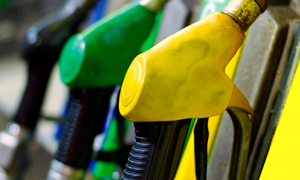Obama Plans to Achieve Target Avg of 54mpg by 2025. 13 More Years Profit for the Oil Men
 AUTOMOTIVE engineers are about to embark on a new road race: to boost the fuel efficiency of America’s gas-guzzling cars. It follows the Obama administration’s decision on 28 August that, by 2025, new cars on US roads must achieve an average fuel efficiency of 54.5 miles per US gallon (23 kilometers per litre).
AUTOMOTIVE engineers are about to embark on a new road race: to boost the fuel efficiency of America’s gas-guzzling cars. It follows the Obama administration’s decision on 28 August that, by 2025, new cars on US roads must achieve an average fuel efficiency of 54.5 miles per US gallon (23 kilometers per litre).The target is double the current average car fuel efficiency in the US, which has flat-lined at 27 mpg (11.5 km/l) for the past two decades, and builds on an existing US Environmental Protection Agency (EPA) requirement for 34.5 mpg (14.5 km/l) fuel efficiency by 2016.
It might sound like an ambitious leap, but much of the technology to make it happen is already coming to market. And the benefits to consumers of spending less on fuel, and to the government of lowering dependence on foreign oil and cutting emissions, pressed Obama into a rethink.
While the move has been welcomed by car makers and environmentalists, it is opposed by Republican presidential candidate Mitt Romney, who dubbed the target “extreme” and “choice-limiting” for consumers. Romney says come 2025, any lower fuel costs will be wiped out by the expense of “unproven” fuel efficiency technologies.
Government projections say the measures could add about $1800 to a car’s price tag, but buyers should save between $3400 and $5000 in fuel costs over the car’s lifetime. But no one really knows how the costs will pan out over the next 13 years - especially when you factor in the great strides already being made in fuel efficiency.
These, driven in part by the existing EPA requirement, include variations on the internal combustion engine from the likes of Ford and Fiat. Both have reduced the number of cylinders from the usual minimum of four - three for Ford, two for Fiat - and both employ smart turbocharging and timing-control technologies to eke out the same power as bigger engines. For example, Fiat claims that its 900cc TwinAir is equivalent to a 1.4-litre four-cylinder engine, but burns 30 per cent less fuel. Ford says its EcoBoost engine has a fuel efficiency of 49 mpg (21 km/l). It is already on the market, and should be much cheaper by 2025.
On the research front, Scuderi Group of West Springfield, Massachusetts, is claiming a 36 per cent efficiency boost with its four-cylinder engine. In this, tasks are separated: instead of all the cylinders pulling in fuel and air and combustion the mixture, one pair of cylinders handles intake and compression of fuel and air and another pair burns it. Tests are ongoing.
Original designs are in the works, too. As New Scientist revealed last year, a team at Michigan State University in East Lansing has developed an ultralight rotary engine that uses tiny shock waves to compress fuel/air mixtures. But instead of turning a drive shaft, the rotary motion is used to generate electricity in a hybrid car, boosting overall energy efficiency because of the generator’s sheer lightness.
Alongside the innovations from the 2011 Automotive X-Prize competition, which paid out $10 million in prizes for lightweight gasoline, ethanol or battery-powered cars that could achieve 100 mpg (42.5 km/l) or its battery energy equivalent, there should be more than enough ideas brewing to meet the EPA’s efficiency target affordably.
You can return to the main Market News page, or press the Back button on your browser.

